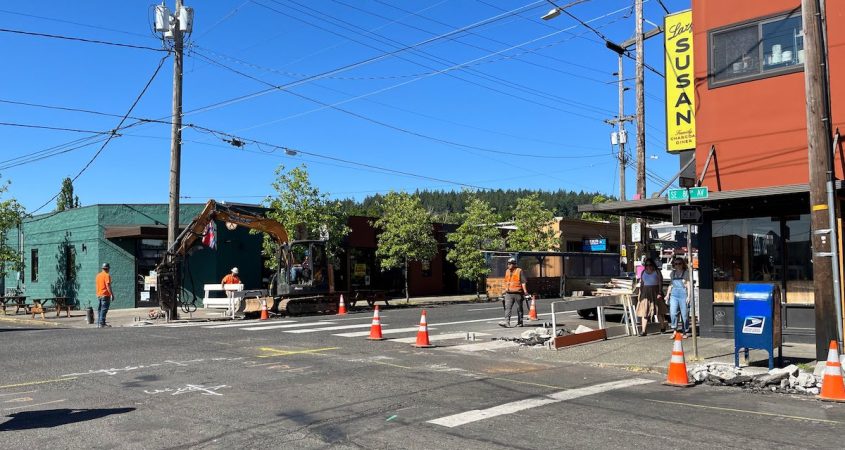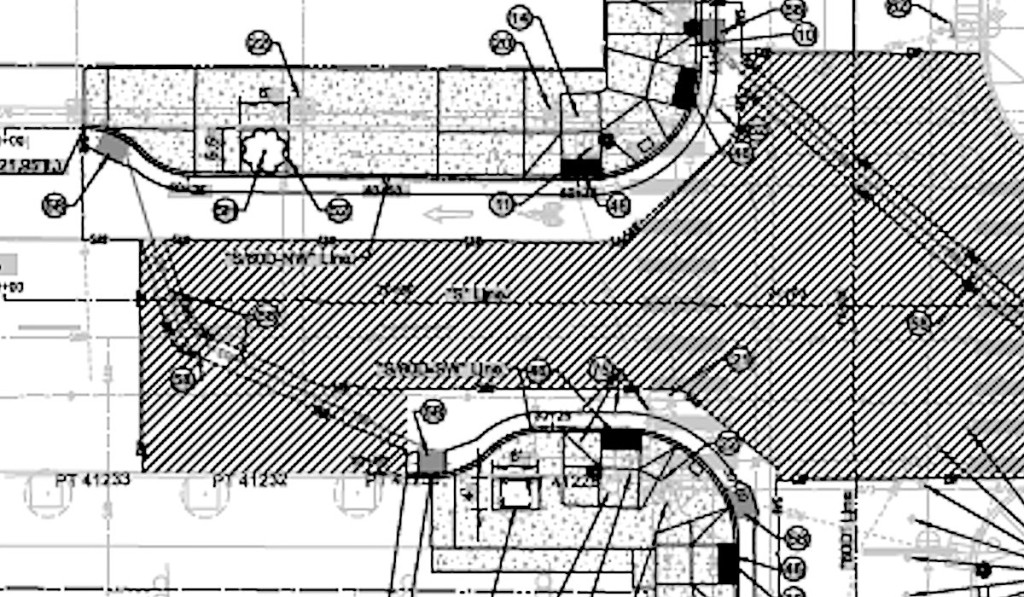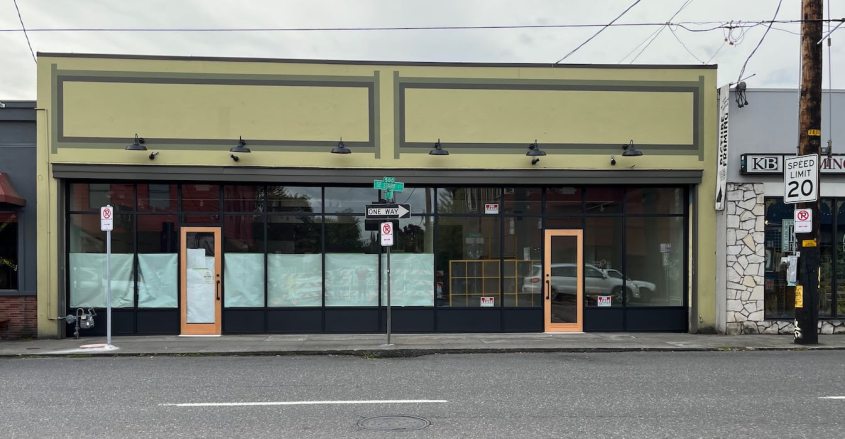Recently, crews working at SE 82nd Avenue and SE Clinton Street closed the outer southbound lane, repurposing the center turn lane to maintain capacity. This work is related to the Portland Bureau of Transportation’s (PBOT) bundle of 82nd Avenue Critical Fixes. Crews will install a pedestrian half signal, a continuous protected concrete median refuge island, updated curb ramps, and new marked crosswalks. Work will also require limited road reconstruction down to its base layer near the intersection. When completed, road infrastructure at the intersection will prohibit left turns.
This project is less than 500 feet from the fully signalized intersection at SE 82nd Avenue and Division Street but 700 feet from the next signalized intersection at SE Woodward Street. Since Portland City Council adopted the PedPDX update to Portland’s Pedestrian Master Plan in 2019, PBOT began installing marked crossings roughly 800 feet apart on major streets. Engineers place marked crosswalks closer together at around every 530 feet for designated Pedestrian Districts like the Jade District, adding median refuge islands, Rapid Flashing Beacons (RRFB), and signals as needed. “Clinton Street was identified early on in our planning process as a desirable location to fill this gap, being the closest intersection to the mid-point between the two existing crossings, and the closest to meeting the 530-foot guideline, and being a four-way intersection that serves a larger area of the neighborhood on both sides of 82nd Avenue,” explained PBOT representative Hannah Schafer.

City planners also chose this location for improvements based on future projects planned along SE Clinton Street. This crossing will eventually lead to an affordable housing development planned for the former Canton Grill site at the northeast corner, and the street will receive upgrades as part of the Jade and Montavilla Multimodal Improvements Project. “An upcoming funded project will be paving some gravel blocks of Clinton Street just east of 82nd Avenue and adding sidewalks that will connect to this new signalized crossing,” remarked Schafer. She noted that this crossing was the site of a 2015 traffic fatality, along with several other non-deadly crashes involving pedestrians struck by motorists, elevating the need for safety upgrades at this intersection.
The Half Signals selected for this project stop vehicle traffic on 82nd Avenue. This equipment works similarly to RRFB signalized crossings. People request the light by pressing a button when ready to cross. However, instead of activating flashing amber lights, drivers see a stoplight, clearly halting traffic so pedestrians can cross. In addition to signals and a continuous protected concrete median refuge island that prohibits left turns, contractors working for PBOT will construct enhanced stormwater inlets and Americans with Disabilities Act (ADA) compliant corner ramps at SE 82nd Avenue and SE Clinton Street.
Since April 23rd, construction at the site closed the southbound number 72 TriMet Bus stop (ID 7948). The stop will reopen in early May. Drivers should anticipate continued construction at this intersection in the next few months, blocking various traffic lanes on 82nd Avenue and closing SE Clinton Street access from 82nd Avenue as work requires.
Promotion: Help keep independent news accessible to the community. Montavilla News has a Patreon account or you can pay directly online. We invite those who can contribute to this local news source to consider becoming paid subscribers or sponsors. We will always remain free to read regardless of subscription.
















































